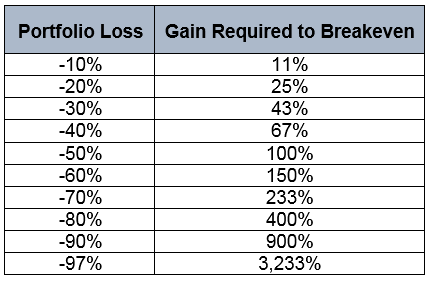I got an email last week I was hoping I wouldn’t get.
TradeStops, the service I use to keep track of my stop-losses, sent a message telling me that Albemarle Corp. (NYSE: ALB), which I had recommended in Boom & Bust back in 2016, had closed below the stop-loss I’d specified for readers.
I wrote a quick note the next morning to my subscribers recommending they sell their shares of Albemarle and move on.
Albemarle was a good trade for us, and I have nothing to complain about here. Readers walked away with 50% gains in the stock, even after the recent correction. By any measure, the trade was a success.
But it still hurt me to tell the readers to part with the stock because I just knew the recent selloff was a market overreaction. Nevertheless, I told them to sell. Here’s why…
It’s possible (and probably very likely) that my gut was right and Albemarle’s recent selloff was the result of short-term profit-taking that would quickly run its course. The long-term macro trends supporting the stock were still in place and nothing had fundamentally changed.
But what if my gut was wrong?
As a morality tale of why it’s important to be systematic and not simply trust your gut, consider the case of billionaire hedge fund mogul Bill Ackman of Pershing Square Capital Management.
Ackman made the news this month because he laid off nearly 10% of his staff, including – gasp! – his personal chauffeur.
You know times must be tough when even the driver is getting canned. But that’s what happens when you lack basic risk management. You get burned.
Ackman lost $4 billion betting big – and wrong – on Valeant Pharmaceuticals. At one point in time, Ackman had nearly 20% of his portfolio in that single stock. But because he owned so much of it (and because so much of his identity as a manager had become centered on it) he couldn’t sell when things started to turn south.
From peak to trough, Valeant lost 97% of its value… and Ackman rode it all the way down.
To put that $4 billion loss in context, Ackman’s total assets under management have fluctuated between about $11 billion and $20 billion the past couple years. So, needless to say, that $4 billion loss represented a big piece of his investors’ capital.
Ackman’s cardinal sin was his lack of discipline, and it’s likely he’ll never fully recover from this. Let’s play with the numbers.

Gains and losses aren’t symmetric. If a stock drops 10% on you, a 10% gain won’t get you back to breakeven. You have to earn 11%.
If you lose 50%, you have to earn 100% to get back to breakeven.
And if, like Ackman, you lose 97% on a stock, you’d need 3,233% returns just to get back where you started.
I don’t know about you, but not many stocks in my portfolio return 3,233%, or at least not in a timely manner. This is why it’s absolutely critical that you cut your losses early.
If you’re a good stock picker, you can easily recover from a 10% or even a 20% loss by simply making 11% to 25% on the next trade. That’s doable.
But you’re not going to recover from a 97% loss. That money is gone forever.
The content of our articles is based on what we’ve learned as financial journalists. We do not offer personalized investment advice: you should not base investment decisions solely on what you read here. It’s your money and your responsibility. Our track record is based on hypothetical results and may not reflect the same results as actual trades. Likewise, past performance is no guarantee of future returns. Certain investments such as futures, options, and currency trading carry large potential rewards but also large potential risk. Don’t trade in these markets with money you can’t afford to lose. Delray Publishing LLC expressly forbids its writers from having a financial interest in their own securities or commodities recommendations to readers.
Recommended Content
Editors’ Picks
EUR/USD stays in daily range slightly below 1.0900

EUR/USD continues to move up and down in a narrow band slightly below 1.0900 in the second half of the day on Monday. The modest improvement seen in risk mood makes it difficult for the US Dollar to find demand and helps the pair stay in range.
GBP/USD treads water above 1.2900 amid risk recovery

GBP/USD is keeping its range play intact above 1.2900 in the American session on Monday. The positive shift seen in risk sentiment doesn't allow the US Dollar to gather strength and helps the pair hold its ground ahead of this week's key data releases.
Gold struggles to hold above $2,400

Gold loses its traction and trades in negative territory below $2,400 after suffering large losses in the second half of the previous week. The benchmark 10-year US Treasury bond yield holds above 4.2% and risk flows return to markets, not allowing XAU/USD to rebound.
Solana could cross $200 if these three conditions are met

Solana corrects lower at around $180 and halts its rally towards the psychologically important $200 level early on Monday. The Ethereum competitor has noted a consistent increase in the number of active and new addresses in its network throughout July.
Election volatility and tech earnings take centre stage
/stock-market-graph-gm532464153-55981218_XtraSmall.jpg)
The US Dollar managed to end the week higher as Trump Trades ensued. Safe-havens CHF and JPY were also higher while activity currencies such as NOK and NZD underperformed.